Learning Languages, Bridging Cultures
MY MISSION EXPERIENCE IN MINDANAO, PHILIPPINES
By Lanieta Tamatawale
Lanieta Tamatawale is a Columban Lay Missionary (CLM) from Fiji who came to the Philippines in 2003 as a member of a team from Fiji and Tonga. After six years here Lani was assigned back to Fiji for four years as CLM Coordinator. Since 1 Jan 2015 she has been working in Hong Kong as a member of the Lay Missionary Central Leadership Team.
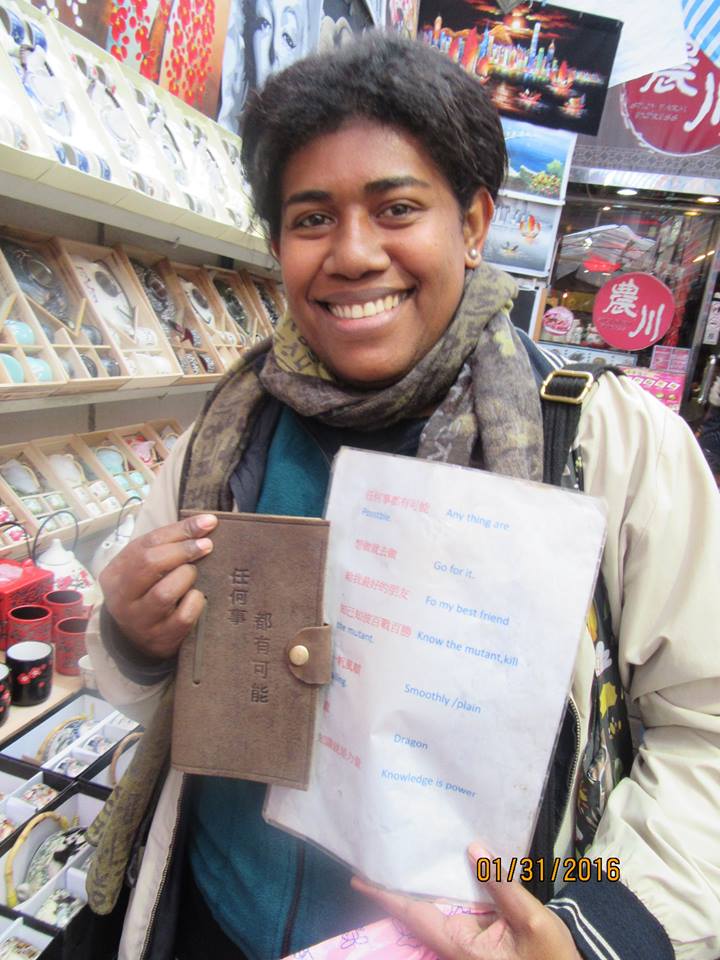
The author in Hong Kong
I first came to the Philippines in 2003. I was shocked by the many people I saw in Manila and by the bumper-to-bumper traffic. Jeepneys and tricycles were new to my two companions and me. They amused us and it took time for us to get use to riding them.
I spent six month studying the Cebuano language in Davao City after which I was assigned to Holy Rosary Parish, Agusan, Cagayan de Oro City. I lived in Barangay Tablon and was asked to organize and form a youth group there.
During my first few months I lived on my own, renting a house. I also worked with the Deaf Ministry. I spent Monday to Friday in the school with Deaf children. Again, I had to learn a new language, Sign Language. I was just getting a grasp of Cebuano and even felt that my knowledge of it was deteriorating. It’s so hard to learn two languages at the same time! It was like my energy was being sucked out every day. But that did not stop me as I was making friends and getting to know more people. The more I got to know them, the more interested I was in becoming proficient in Cebuano and in Sign Language to communicate with and be one with the people.
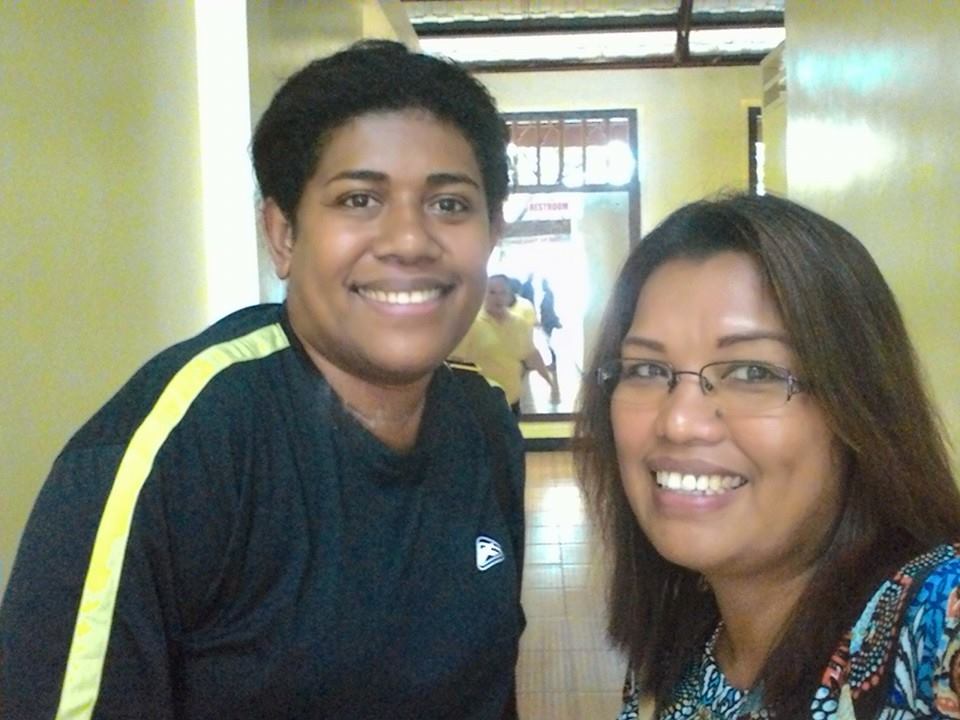
Lani and Vj Arante
My Sign Language teacher, Vj Arante taught me well and was very patient with me. We worked well together as a team and I learned to balance my ministry with the youth. Through the Deaf Ministry I learned Sign Language and the culture of the Deaf. I became friends with Deaf people who became my ‘auxiliary teachers’ in Sign Language. I became part of their lives – visiting their families, listening to their stories, to be their voice, and I loved to be with them and help them in any way I could.
The National Anthem of the Philippines, Lupang Hinirang, in Filipino Sign Language
I also worked in Holy Rosary Parish Kindergarten. I met a boy there named Jude Naliponguit. He lived near the house I was renting. He would say ‘Good morning’ to me, and I would reply ‘good morning’ to him. His mother, Shirley Naliponguit, would only smile as she thought I couldn’t speak Cebuano. But the moment I greeted her in that language she was so happy and started talking to me in Cebuano. I had to tell her though to slow down because I wasn’t yet fluent and couldn’t follow what she was saying if she spoke fast. We both laughed and then she spoke slowly to me. That was the beginning of our friendship. She had two sons whom she would send to my house to keep me company. Most of the time they would feel sorry for me living alone and so would invite me to their family house and share a meal. I was happy with this. They asked if I would like to rent a room near their house and eat with them. I agreed to their suggestion.
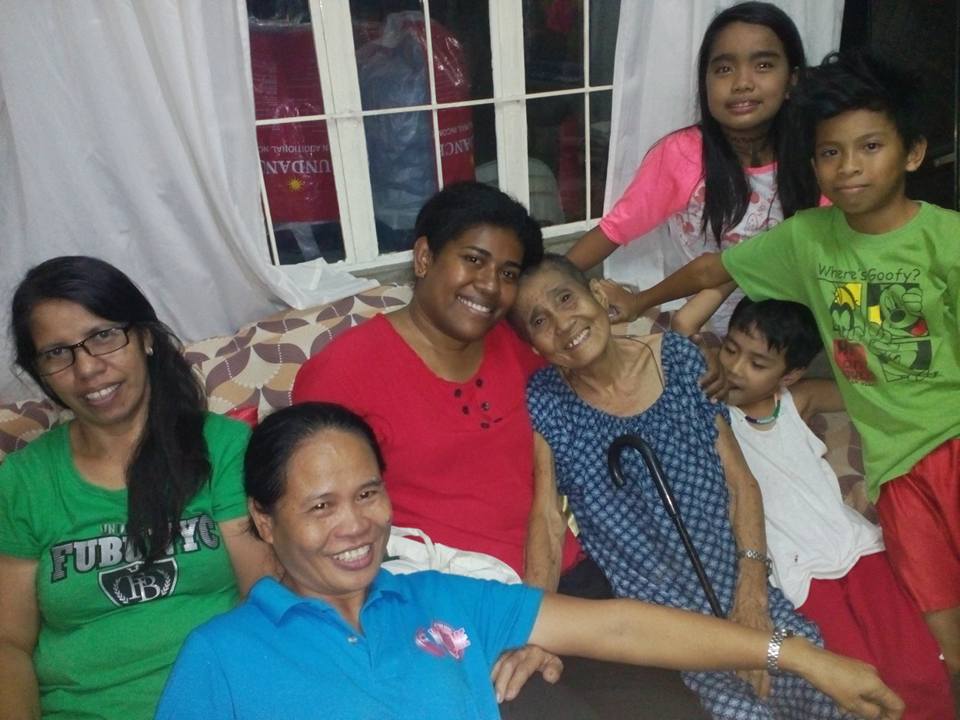
Lani with friends in Mindanao
I felt at home with the Naliponguit family. My Cebuano improved. Nanay Andring, the mother-in-law of Shirley, would speak Cebuano only, not English, to me. I remember, the first time we were alone together at home, she was telling me stories and I kept saying, ‘Oo, Oo’, which means, ‘Yes, yes’. She laughed at me and said, ‘Don’t lie, Lani. You don’t understand but you keep saying “Yes, yes”. I smiled and we both laughed. She said to me, ‘Sorry I won’t talk to you in English because I can’t speak it and I want you to be fluent in Cebuano. You’re learning our language and you should speak it well.’ I was happy with that, because I became really fluent in Cebuano. The whole family spoke to me only in Cebuano. This helped me in my ministry with the youth.
I was happy to have been assigned to Holy Rosary Parish and meet these wonderful people who helped me on my journey as a missionary. They taught me more about the two cultures and two languages I learned during my first three years.
In my second three-year term I was assigned to Ozamiz City. I worked for the BEC (Basic Ecclesial Communities), Vocation Promotion, and continued to work with the Deaf. The local people were surprised that I knew both Sign Language and Cebuano. They were impressed and would ask where I learned both and why I was so fluent. I would tell them that I had worked in Cagayan De Oro City for three years.
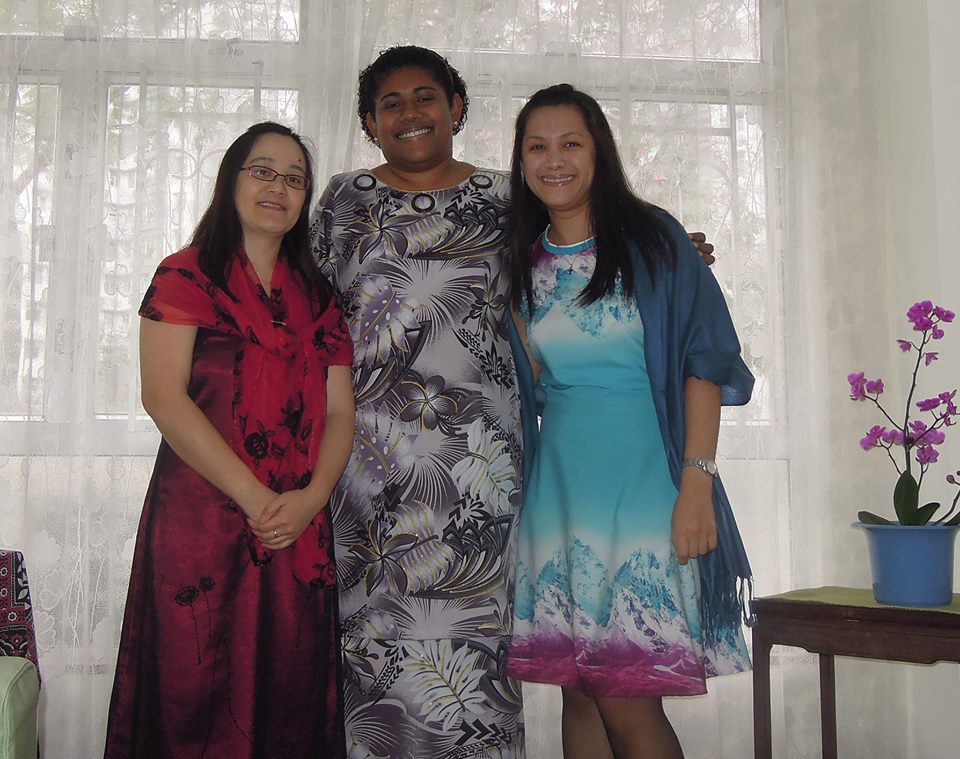
Lay Missionary Central Leadership Team, Hong Kong
L to R: Gracia Kibad (Coordinator), Lani Tamatawale, Jhoanna Resari
Gracia, from Bauko, Mountain Province, Philippines, has spent many years in Ireland. Jhoanna from Rizal, Philippines, was in Taiwan for nine years before the present leadership team took office in 2015.
I enjoyed working in Mindanao, the people being very friendly and hospitable. The most important thing is learning the language and being able to speak it to communicate with the people. Being with the people and chatting with them in their own language brings a sense of belongingness. People know that you are interested in them and in their culture. I always enjoyed when people saw me as a foreigner, thinking that I didn’t know their language, that I could speak only English. When I would speak to them in their language their eyes would light up and they would ask me, ‘You speak Cebuano?’ I would smile and say, ‘A little.’ They would say, ‘Oh you really speak fluently! Is your father an Americano?’ I would only laugh, and sometimes jokingly say, ‘Yes, my mama is Filipina and my papa is a Black Americano’. And they would reply, ‘Ah, half-half ka?’ That always made me laugh.
I am grateful for the wonderful mission experience I had in Mindanao for six years, for the friends and families who accepted me into their lives and were part of my journey, for their kindness, generosity and hospitality. Mindanao will always be my second home. May God bless all those I came to know there!
Singing during Mass, Holy Cross Church, Wairiki, Taveuni, Fiji
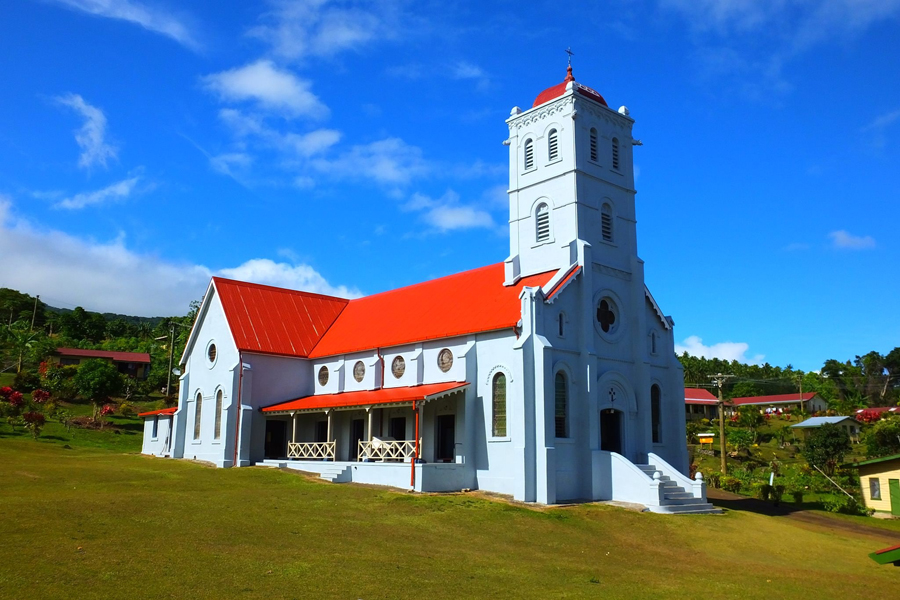
Holy Cross Church [Source]
Holy Cross Parish was established in 1864 by the Marists. Three of the pioneering group of 12 Columbans who went to Fiji in 1952, Frs PJ Kelly (+2006), Martin Dobey (+2007) and James Gavigan, went to Wairiki to learn the Fijian language and get some pastoral mentoring from the Marists. They were there from mid-February until the end of August of that year. Fr Gavigan is now retired in Ireland.
